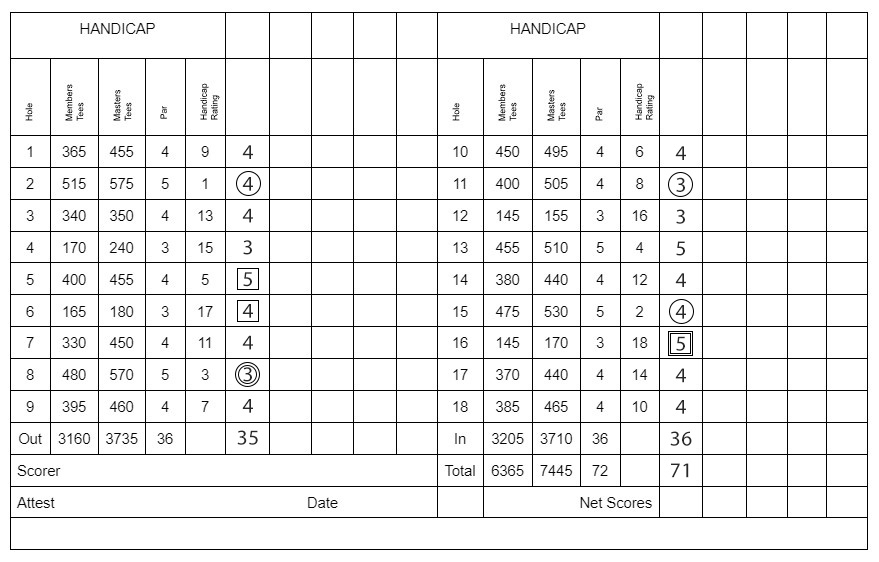What is a birdie in golf?
A birdie is 1 stroke under par for an individual golf hole. If it is a par 4 and it takes you 3 strokes to get the golf ball in the hole it is a birdie or ‘bird’.
Golf courses consist of par 3s, 4s and 5s, you can shoot a birdie on any given hole by shooting one stroke less than par. For professional golfers, birdies are fairly common, your average golfer makes a birdie very rarely. The word ‘birdie’ is said to have come from the Atlantic City Country Club in the early 20th century.
In the scorecard below, birdies are represented with circles around the score for that hole. When scoring there is no need to put a circle around your score if it is a birdie. This method is used for scoring professional golf to make it clear on tv:

Related: What is a par in golf?
What is a par?
In golf scoring terms a ‘par’ is what you’re generally aiming to get on each hole. Each hole on the golf course will have it’s own par, with all 18 holes equally a combined 70-72 par. In golf terms you can use the word ‘par’ to describe your score on an individual hole. Example: “I got a par on the 15th hole” or you can use it to describe your score over multiple holes. Example: “I was 4 over par after 5 holes”. The golf term ‘birdie’, however, can only be used in reference to a single hole.
Golf scores can be recorded as a ‘gross score’ which is the number of strokes for the round. A ‘net score’ refers to your handicap adjusted score for the round. When talking about birdies it is always in the context of a gross score, a birdie means it is one under par, not one under your handicap.
Related article: How to score in golf
How a par is determined
A par is generally determined on the length and difficulty of the hole with the expectation that you will have two putts per hole. A par 3 you can usually reach the green in one shot, a hole in one will almost always be on a par 3. The green can usually be reached in two strokes on a par 4 and can be reached in 3 strokes on a par 5. This is referred to as ‘hitting the green in regulation’. If you do hit the green in regulation your first putt is referred to as a ‘birdie putt’ because if you sink it you’ll walk away with a birdie for that hole.
Other scores and golf terms
Each of the following golf terms relate to a score on an individual golf hole.
- Condor = 4 strokes less than par
- Albatross = 3 strokes less than par (also referred to as a ‘double eagle’)
- Eagle = 2 strokes less than par
- Birdie = 1 stroke less than par
- Par
- Bogey = 1 stroke more than par
- Double bogey = 2 strokes more than par
- Triple bogey = 3 strokes more than par
- Quadruple bogey = 4 strokes more than par
Is a birdie difficult to get?
Most golfers would be very happy with a birdie, if you got a bird regularly you’re good at golf. An average golfer’s score would rarely contain a birdie or ‘bird’.
Even for a professional golfer a birdie can be difficult to get. In the 2023 British Open, the winner Brian Harman finished -13 par after 4 rounds (72 holes). He scored a total of 1 eagle, 17 birdies, 48 pars and 6 bogeys.
It also depends on the course and conditions, most golf courses vary in difficulty. Some holes can be far easier than others, some holes play really short, so if you hit a good tee shot you can give yourself a great chance of setting up a sinkable birdie putt.

